Our Blog - Milan Cathedral
The Duomo, as it is called, is Milan's Cathedral and one of the two most-known (and most visited) things in Milan (Da Vinci's Last Supper being the other). There is quite a bit of history around the Duomo, especially since it took almost 6 centuries to complete, only being finished in 1965 with the inauguration of the last gate. It is the largest church in Italy (the larger St. Peter's Basilica is in the State of Vatican City) and the third largest in the world (the Basilica of the National Shrine of Our Lady of Aparecida in Brazil is the other).
The cathedral is basically in the middle of the city, with streets either radiating from the Duomo or circling it. This layout dates all the way back to the Roman times, when the first cathedral was completed. The old octagonal baptistery, the Battistero Paleocristiano, dates to 335 and still can be seen (you'll see it near the end). The current church began in 1386 by the Archbishop of Milan who's cousin had recently taken over power in Milan (another of the Visconti family). He created a separate company (the Fabbrica del Duomo) to employ all of the engineers and artisans that would be required to build and maintain the Cathedral (the company still exists today with the same role). Construction stalled due to lack of money as well as various changes in leadership, until 1805 when Napoleon was crowned King of Italy. He ordered the cathedral finished, assuring that all expenses would be paid for by France. This never happened, but it got the facade finished. Additional arches and spires, as well as some statues were finished in the mid 1800's, and then nothing until 1965 when the final door/gate was inaugurated. After a renovation from 2003-2009, the main facade now shows the full magnificence of the pink Candoglia marble.
When it was started, flamboyant gothic was "the style", but by the end, it was not. However, it was completed with that same style, although there are a few others visible if you look hard enough. It is imposing, sitting at the end of a large open square.
The pictures were taken on a couple different days and times, but I'll group them together by Interior, Exterior, Roof, etc. We start with the "full" views, from a couple different angles. I also have a couple of one of the sides ... all 4 sides are fully decorated, not just the front. You can see a bit of scaffolding here

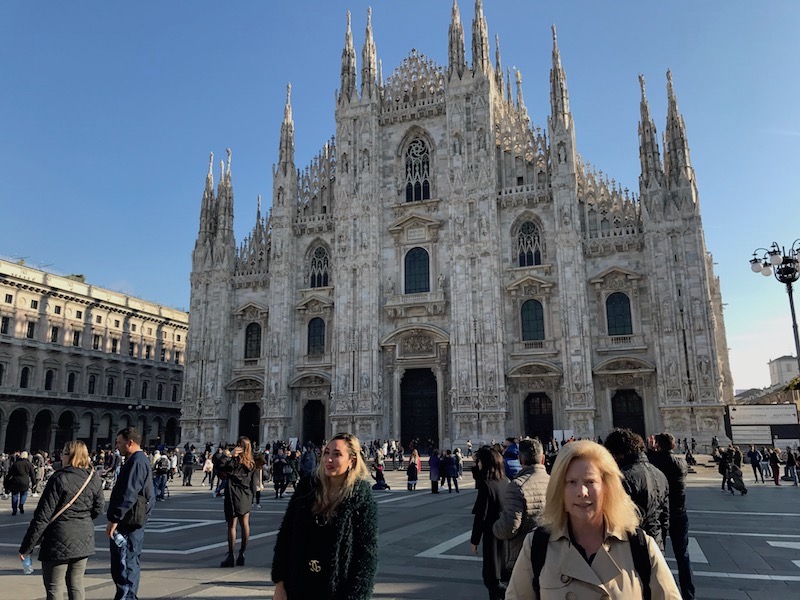







The most famous statue is the Madonnina (Little Madonna), a copper statue of the virgin Mary covered with 3900 pieces of gold leaf. It was cast in 1774 by goldsmith Giuseppe Bini and sculptor Giuseppe Perego. The statue, four meters and sixteen centimeters tall (almost 14 ft), was placed on top of the cathedral's tallest spire and until 1959 marked the highest point in the city at 108.5 meters. The guide told us that when they were building a higher building in the 1950's, that they put a replica of the Madonnina on the top of that building so that she would always be at the highest point in Milan. Another replica was placed in 2010 in a yet higher building.


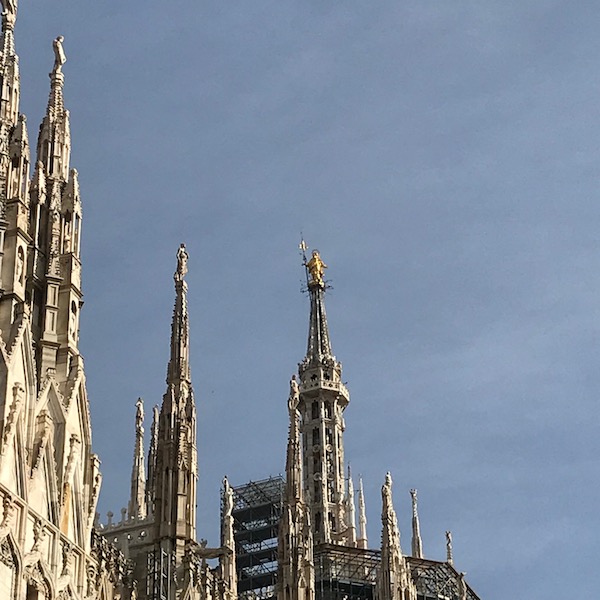

I mentioned that all 4 sides are fully decorated, and I've tried to give a more close-up view of those decorations. Unlike many churches in France where the statues are no longer present (due to the French Revolution), here, all of the statues are in-tact, along with carved statue bases and caps. There are more statues on this building than any other in the world, over 3400 in total (interior and exterior). They represent patriarchs and prophets, martyrs and saints indicate our eternal destiny as people redeemed by the sacrifice of the Cross, guided towards heaven by the Virgin Mary. But if you go around and look, you'll also see roman soldiers, just normal people, and even (that you'll see later) a couple of boxers.

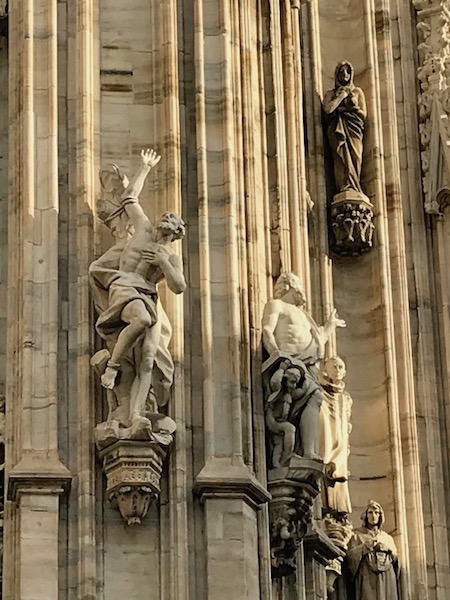


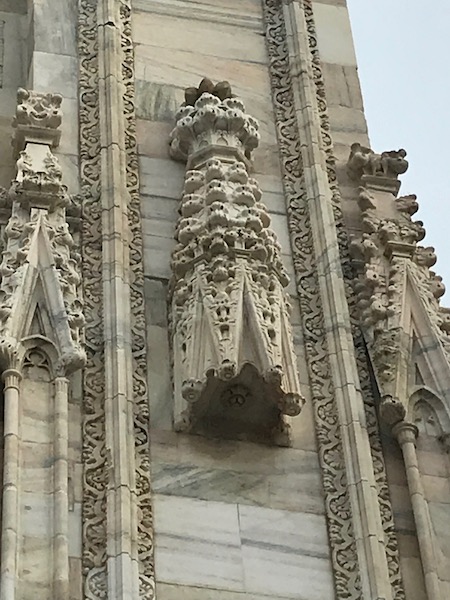

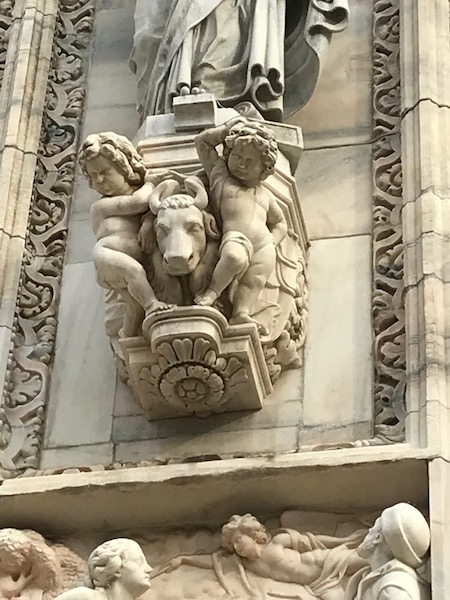
Over the main door, you can see the name "Mariae Nascenti", which is the virgin Mary, who the cathedral is dedicated. The guide also mentioned that "Maria" is very popular as a name in Italy, even for men. Sure enough, as I go through different pages, I see lots of men with "Maria" in their names. Another thing you can see about the main door is a statue that looks like the Statue of Liberty. This statue was sculpted by artist Camillo Pacetti in 1810, making it 75 years older than the Statue of Liberty. It is said that Frederic Auguste Bartholdi took inspiration from this statue to create his 'Lady Liberty'. They are both holding a torch with their right hand, they are both wearing a crown and a tunic. However, this one holds a cross in the left hand (the one in NY holds a book) and in the right hand, the one in NYC has a flame while this one does not.
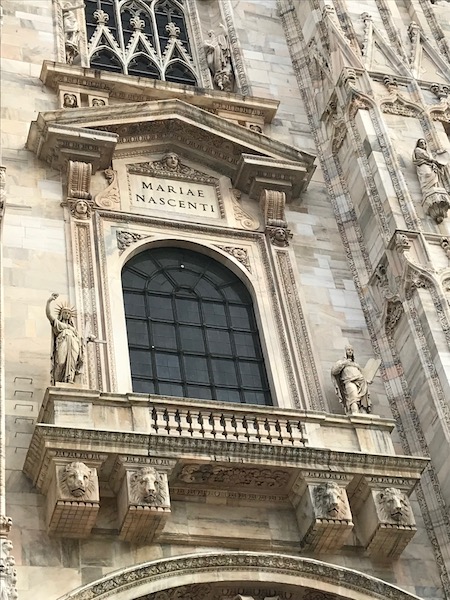


There five large bronze doors that are all beautifully crafted. The central one is the oldest and was created in the nineteenth century by Ludovico Pogliaghi.
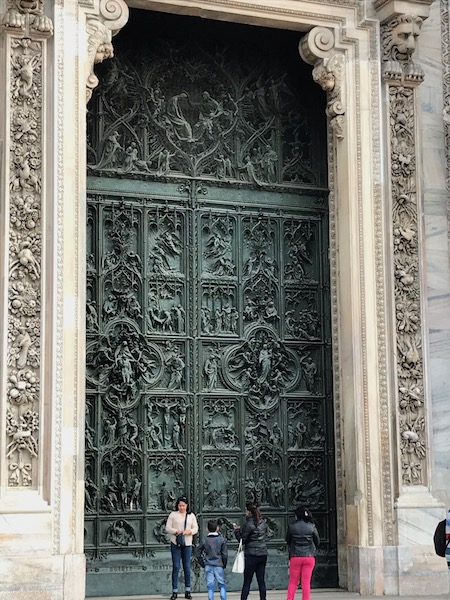


If you have already gone through my Day 4 blog, you will have seen the model for this bas-relief of the Sacrifice of Abraham, done in 1664 for a relief of the facade of the church. According to the Hebrew Bible, God commands Abraham to offer his son Isaac as a sacrifice. After Isaac is bound to an altar, a messenger from God stops Abraham at the last minute, saying "now I know you fear God." Abraham looks up and sees a ram and sacrifices it instead of Isaac. Here you can see Abraham with the knife in-hand, his son Isaac with hands bound. If you compare the two, you can see subtle differences (for me, especially in the angel).
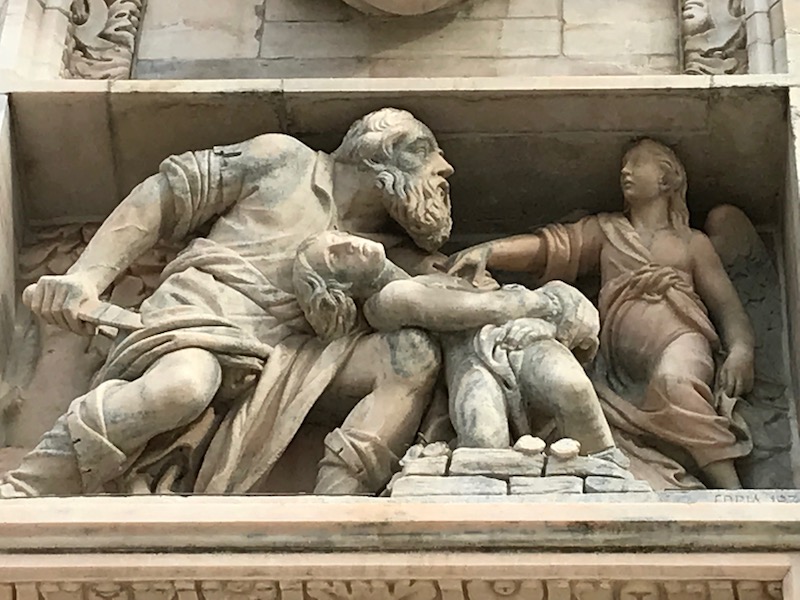
And now the interior for awhile ... we entered through a side door, so the full views of the interior will be a bit later. As we came in, we say one of the most famous statues in the Cathedral. This is entitled 'Saint Bartholomew Flayed' and was done by Marco d'Agrate in 1562. There are differing stories on how Saint Bartholomew died, but one of them (probably the most popular within the art-world) is that he was skinned alive. Here, the saint is shown with his skin wrapped around his shoulders. For me, the most impressive part of this statue is the detail in which his muscles and ligaments are shown.


The cathedral has five large naves divided by fifty-two pillars - one for each week of the year - that support the cross vaulted ceiling. The pillars are massive and at the top, each one has a round set of carved figures as well.









General interior
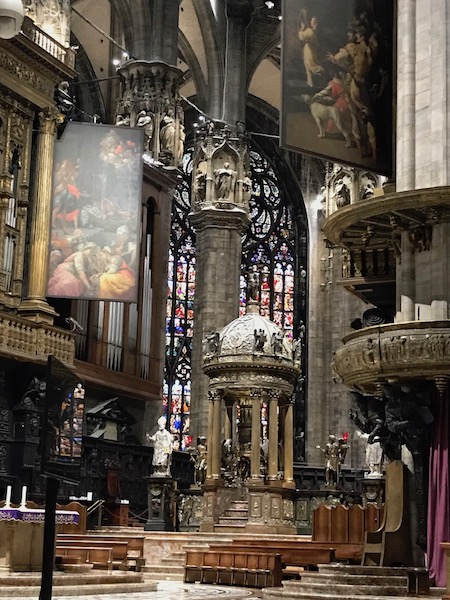

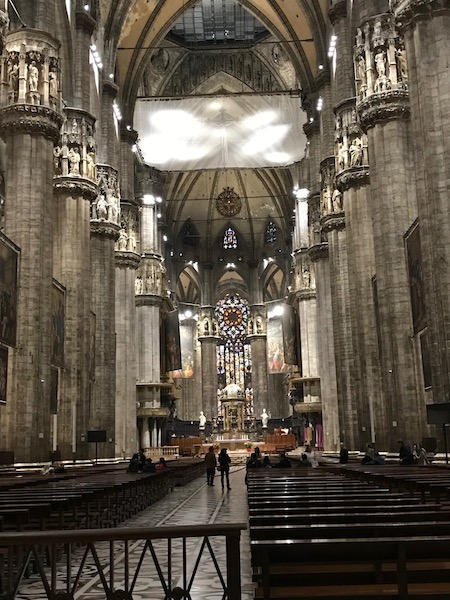
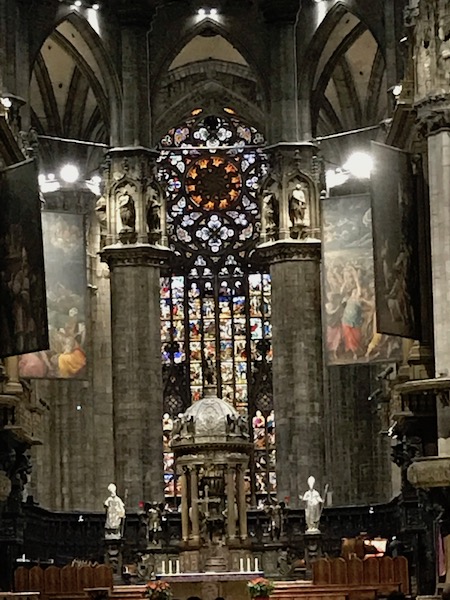

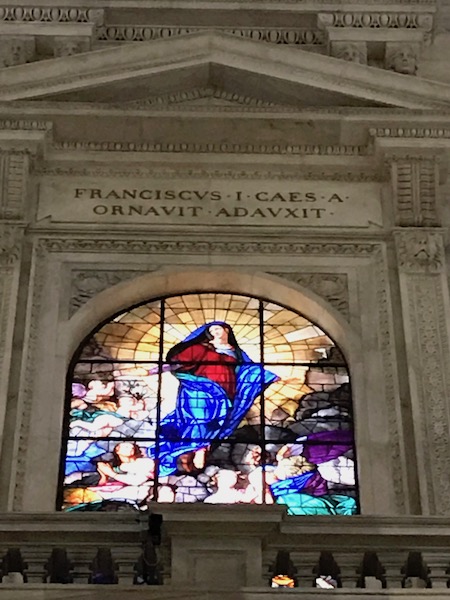
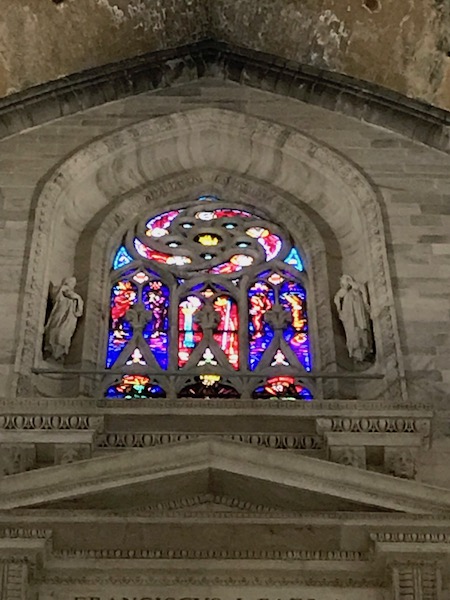



The 5-manual, 225-rank pipe-organ, built jointly by the Tamburini and Mascioni Italian organ-building firms on Mussolini's command, is currently the largest organ in all of Italy.

By now, you'all should understand my fascination with stained glass windows. There are lots of stained glass windows here, some are more unique than others. Within the apse of the Cathedral, there are three large windows with stained glass, which are considered the highest in the world.


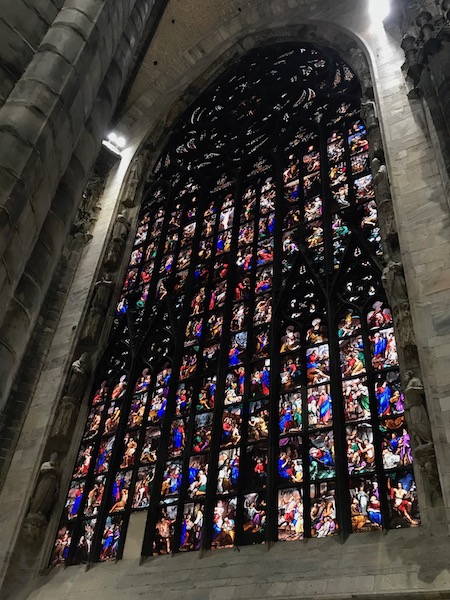



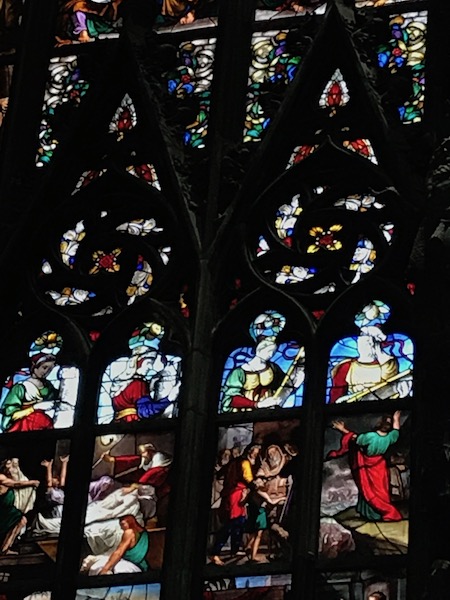


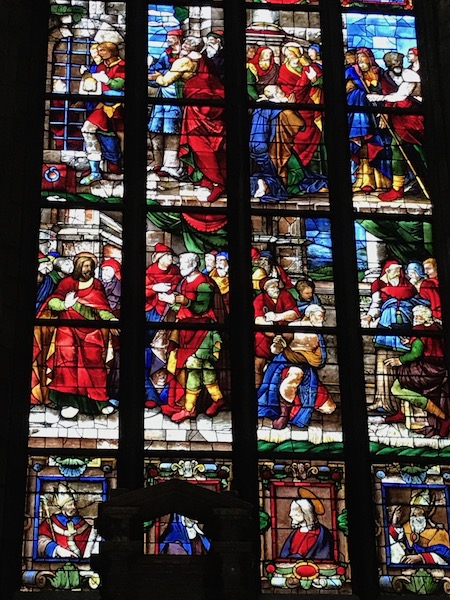
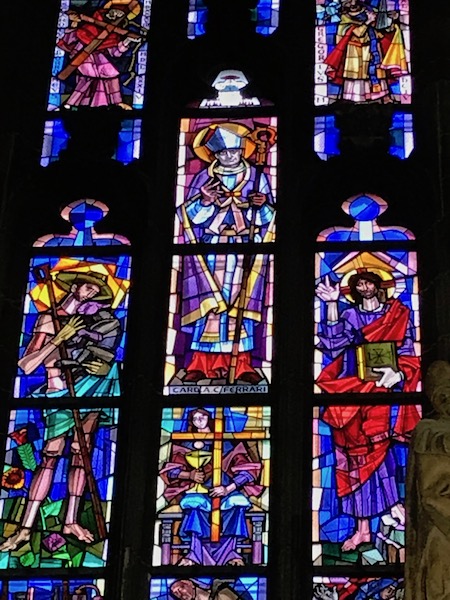
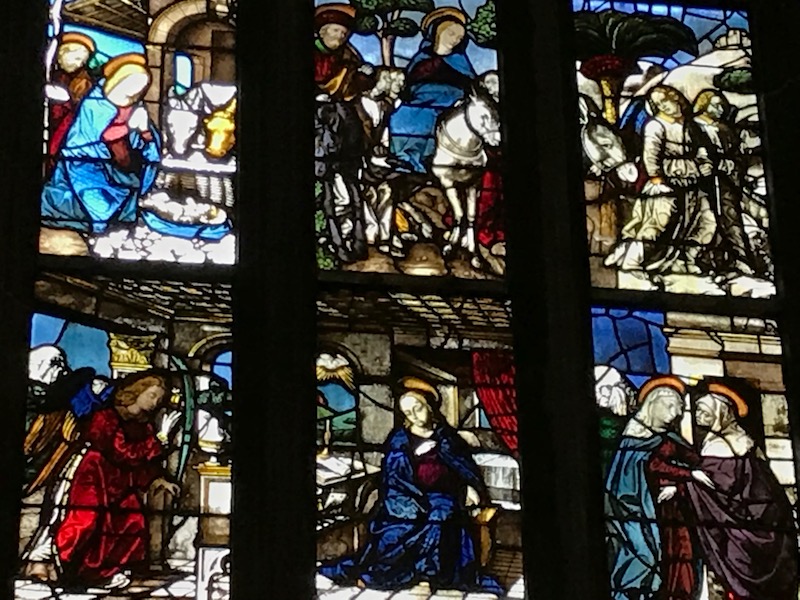

Since you can't really see very well what the Madoninna looks like from the outside (at least not with my camera), we took a picture of a replica of it, which is inside.

Another of the actual bas-reliefs that you may have seen the model for in my Day 4 blog. This one is the Flight into Egypt, described in the Gospel of Matthew. Soon after the visit by the Magi, who had learned that King Herod intended to kill the infants of that area, an angel appeared to Joseph in a dream to tell him to flee to Egypt with Mary and infant son Jesus. Here you can see Mary and Jesus riding on the animal as they leave Egypt.

This is one of three magnificent altars designed by Pellegrino Pellegrini. I've included the stained-glass windows along with the altar here, as well as a long-range picture, so that you can try to get a sense on how not only is the altar ornate, but also the general area of where it is placed in the cathedral is also highly decorated.


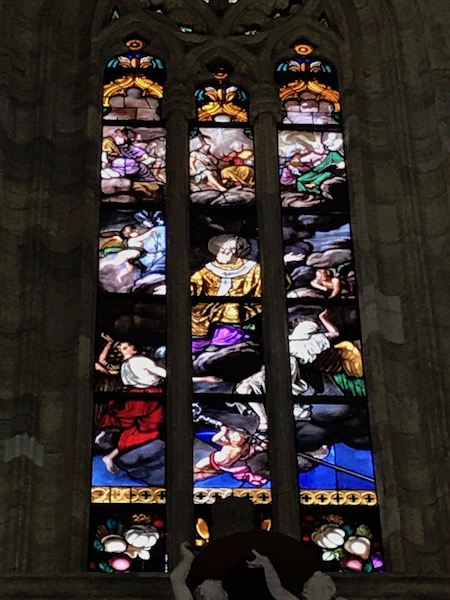

Not normally hanging, there were many artworks hanging celebrating the birthdate of Saint Charles Borromeo. He was from Milan and became the Archbishop of Milan in 1564. They are shown only in November and December every year.
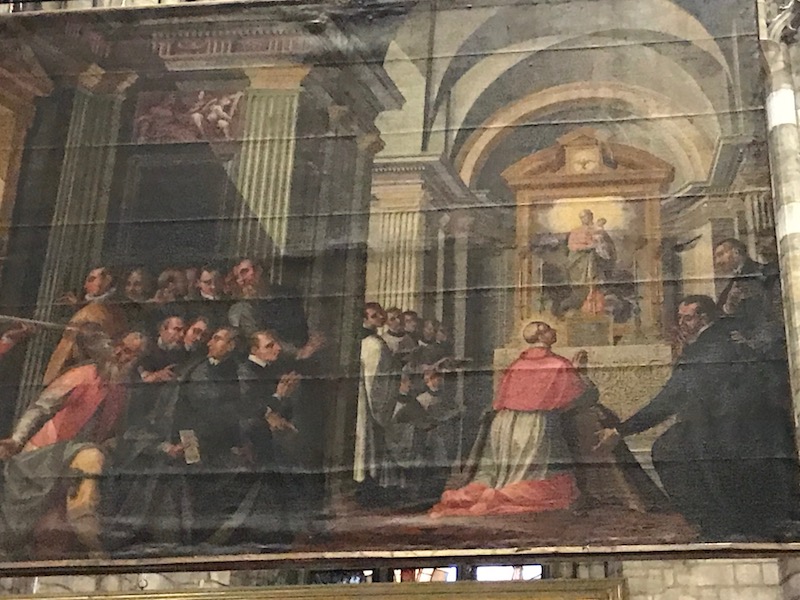
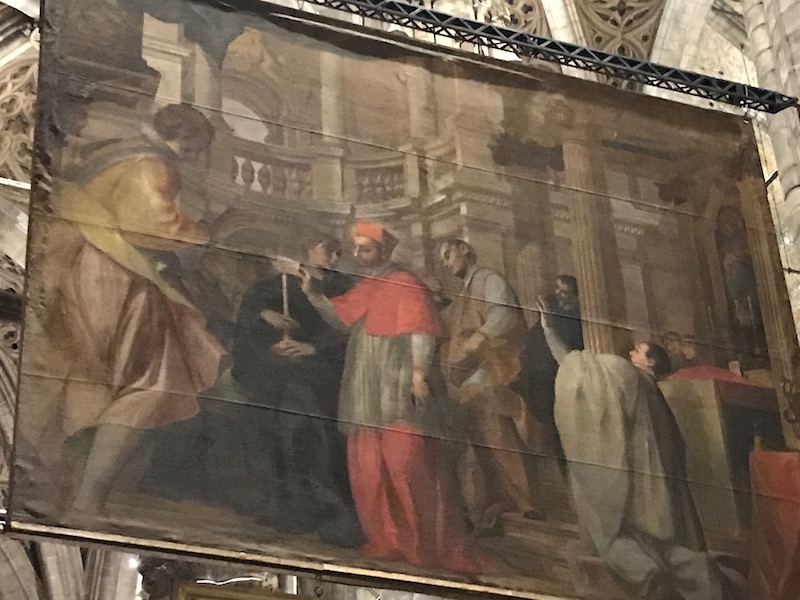
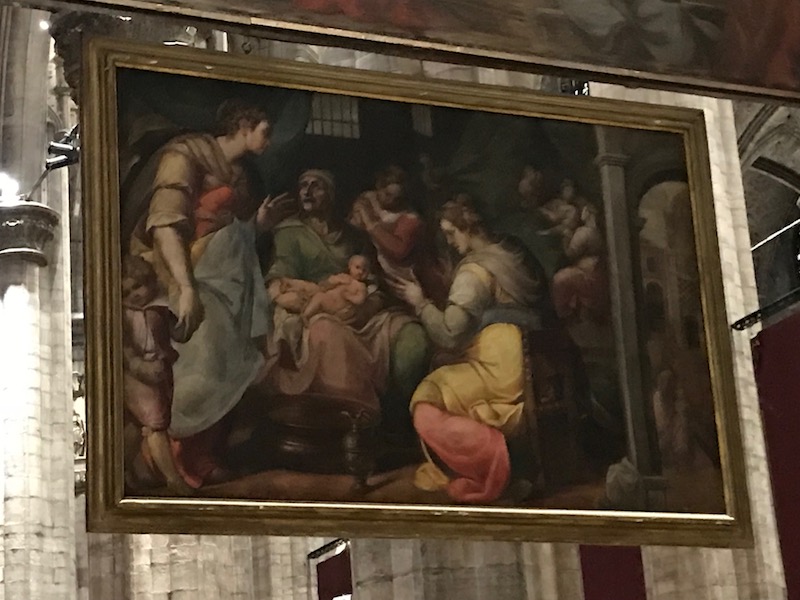

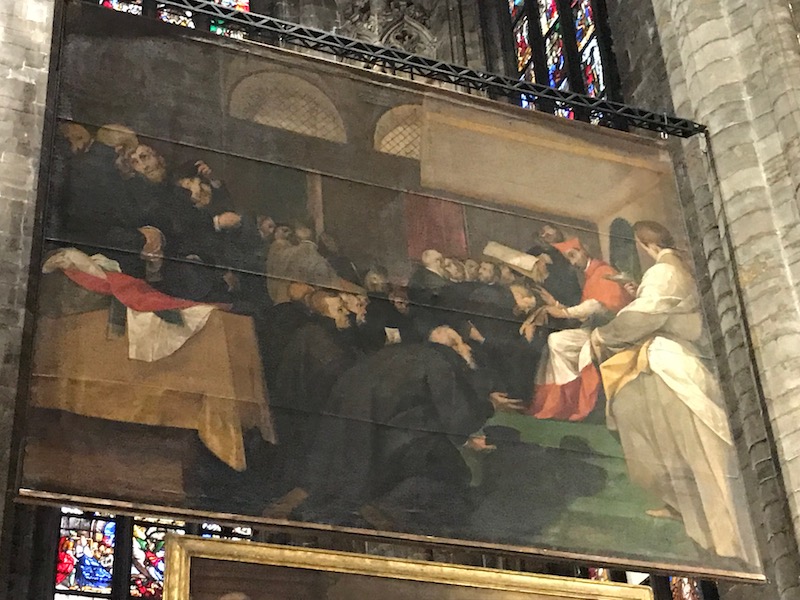
There are only a few sarcophagi within the cathedral, one of them belonging to Marco Carelli, who donated 35,000 ducati to accelerate the construction of the cathedral.

A small red light bulb in the dome above the apse marks the spot where one of the nails reputedly from the Crucifixion of Christ has been placed. The Holy Nail is retrieved and exposed to the public every year, during a celebration known as the Rite of the Nivola.
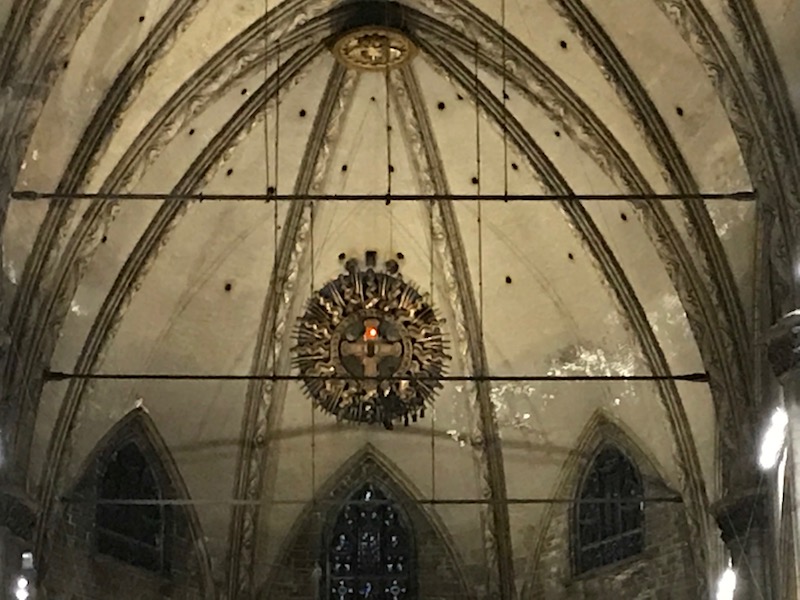
Archaeological excavations beneath the cathedral have revealed the foundations of a Paleochristian Baptistery dating from the 4th century. It is said to be the baptistery in which St. Ambrose, Bishop of Milan, baptized his student Augustine. It is built in the shape of an octagon and St. Ambrose even inscribed on the walls why, stating that in Christian symbolism, the number eight represents eternity and rebirth, because the world was created in seven days and Christ rose from the dead on the eighth day. The octagonal baptismal font is easily identifiable in the center, with apses radiating outward around it. Two canals that fed the font can be seen, as well as fragments of the marble pavement.




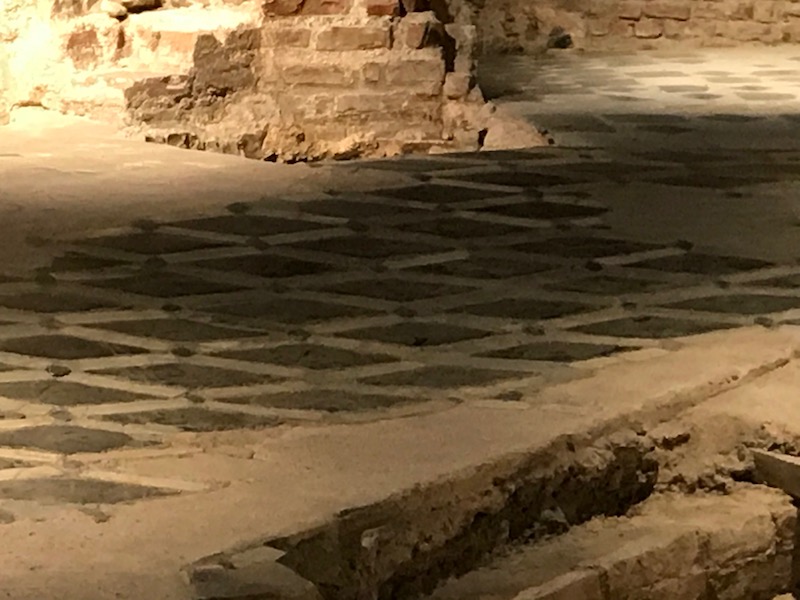

In 1786, Maria Teresa issued a decree to change the official measurement of days from 'Italian hours' (the day went from sunset to the following sunset) to 'French hours' (a day beginning 12 hours after local solar noon). To comply, the city of Milan had to construct something that could determine the moment of solar noon each day. This 'instrument' is called La Meridiana, the sundial of the Milan Cathedral. If you look at the first picture, in the middle you can make out a light coming through a hole. As the sun's light comes through this hole (it is there for only about 1/2 an hour each day), it hits along a brass line on the floor. This, however, does not tell time, but only indicates when the sun is exactly at 'solar noon'. There are also marble slabs embedded along the meridian (this bronze line) marking the period of the year with the corresponding Zodiac signs.


From there, we headed to the roof. I won't have much commentary here, since it is really more general pictures. You can see the continued detail of the carvings up here as well as multiple statues and spires. There are multiple statues up here, including a set of boxers.

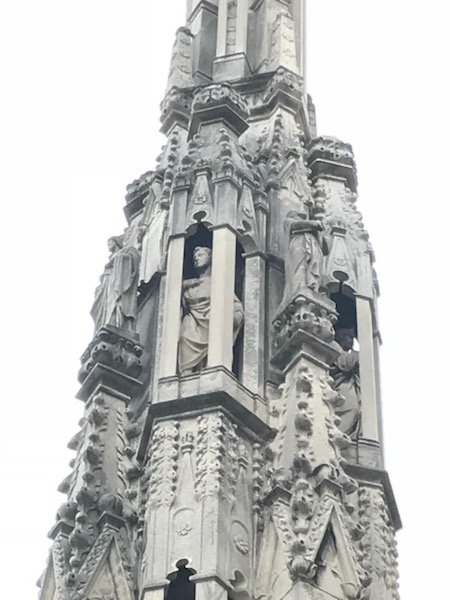

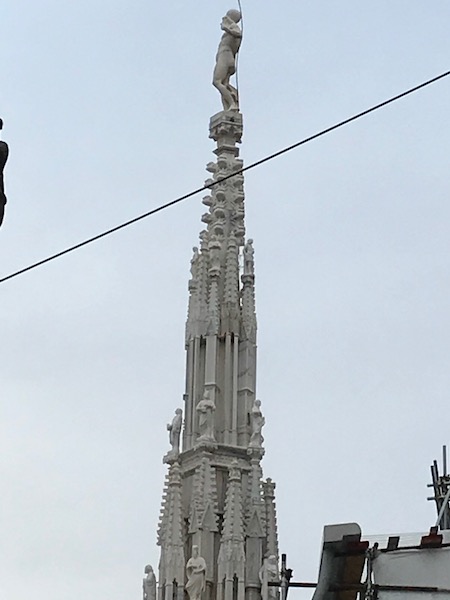



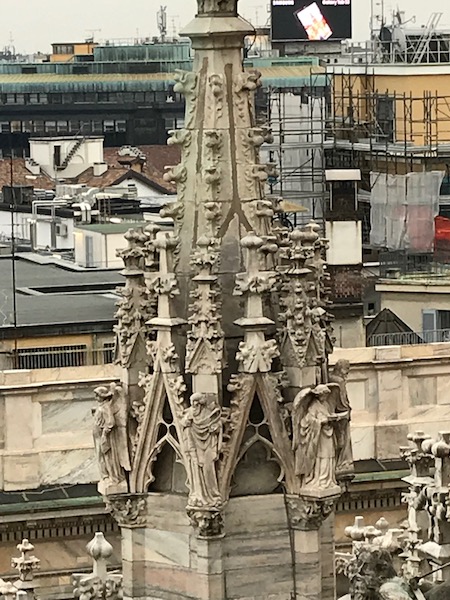

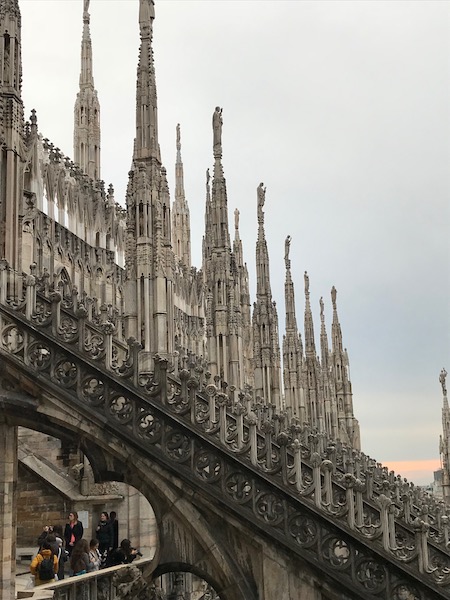
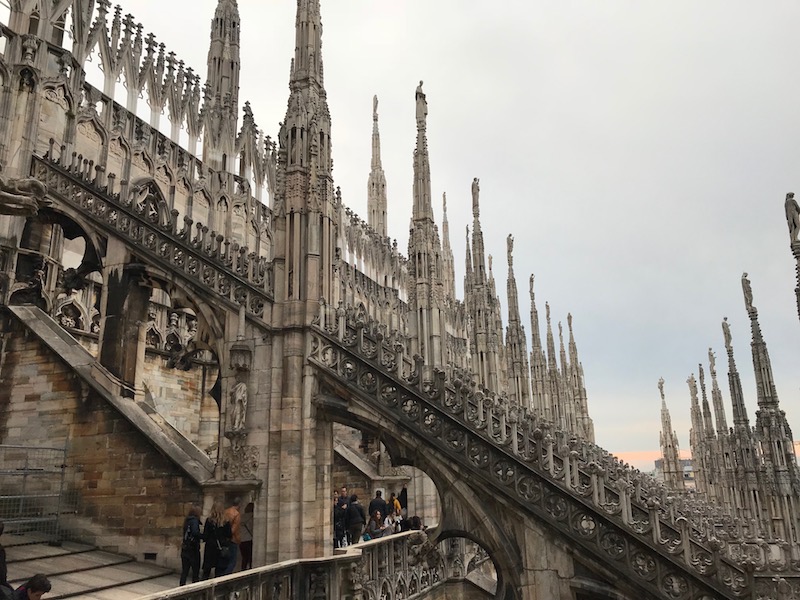

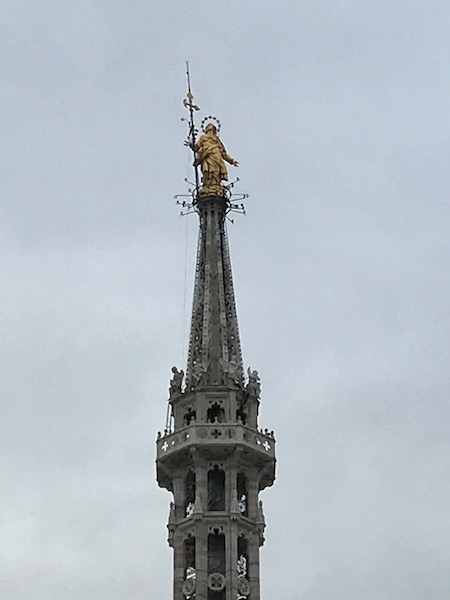
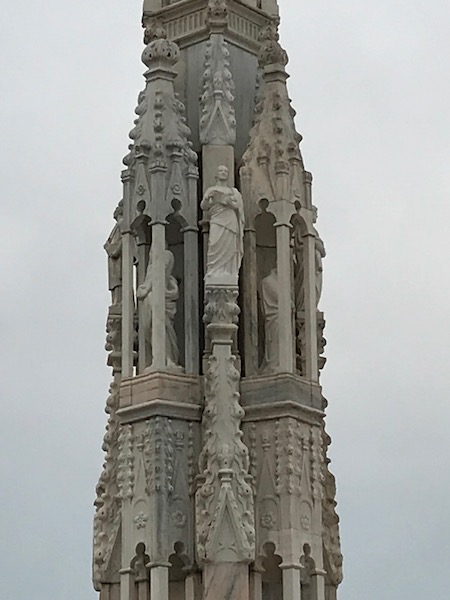

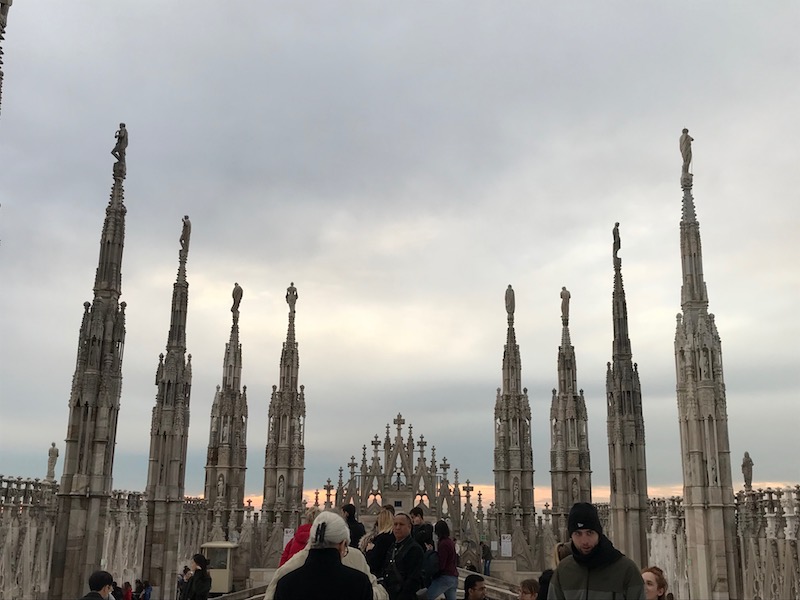

Here are also a few pictures from the roof, where we attempted to capture the Alps in the background.



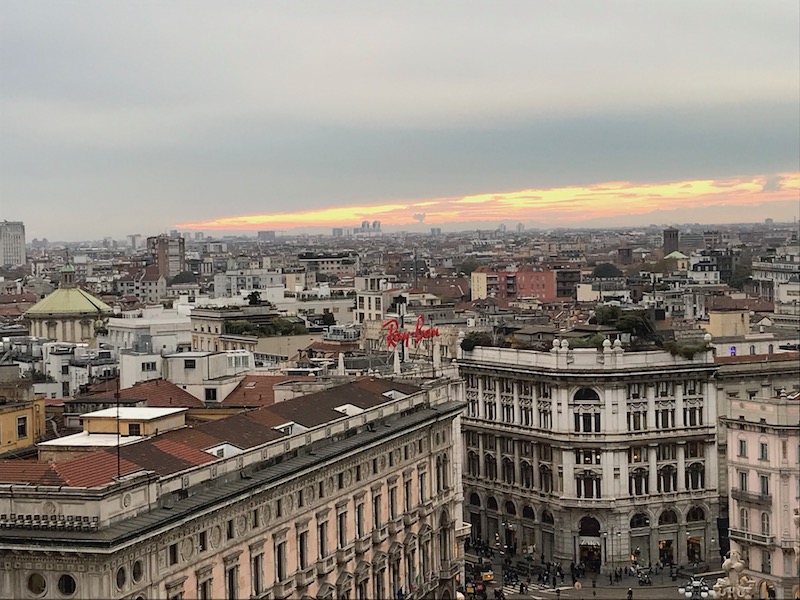

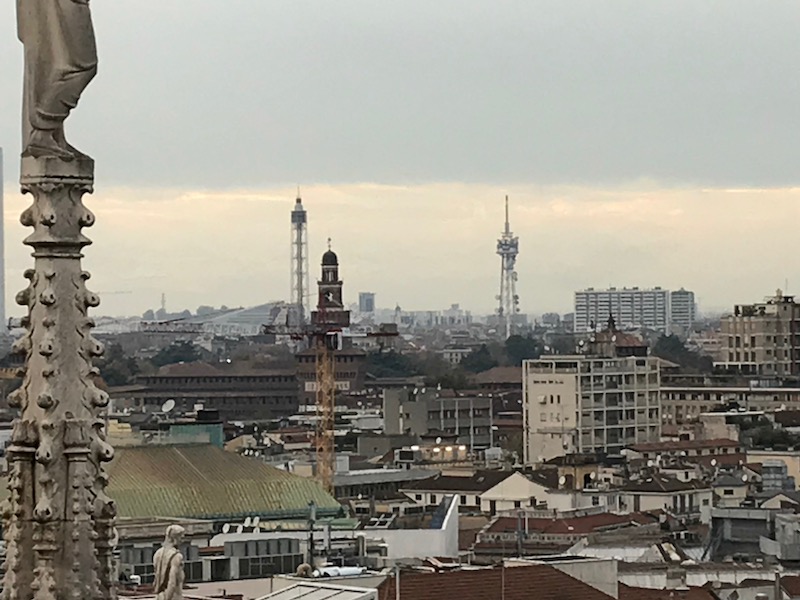
And that ends our time in Milan!
Go back to the main Milan page
or go back to the main blog.